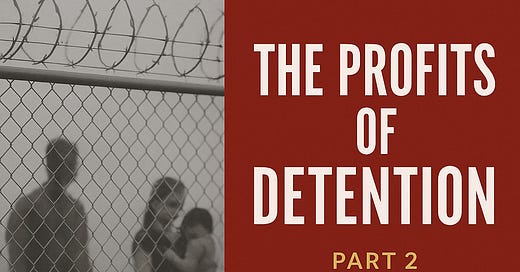"This system no longer detains the dangerous. It detains the available."
In 2025, the face of immigrant detention has changed. It is no longer just men convicted of violent crimes. It is parents picking their children up from school. It is grocery store clerks and Uber drivers. It is Venezuelan asylum seekers fleeing authoritarian collapse.
It is not who poses a threat—it is who is easiest to take.
The Quota Problem
The federal government has long maintained what ICE insiders call the "bed mandate"—a requirement that tens of thousands of detention beds be filled at any given time. But under private prison contracts, those mandates are backed by guaranteed payments: the companies get paid whether the beds are full or not.
This creates a perverse incentive. If beds are empty, corporate revenue suffers. If non-violent undocumented immigrants are detained to fill them, the system thrives. And that is exactly what is happening.
From Enforcement to Harvesting
Under the Trump administration's 2025 directive, ICE has dramatically widened its criteria for detaining immigrants:
Arrests at schools, hospitals, churches
Deportations of people with no criminal history
Detention of entire families, including children
Over 138,000 deportations have occurred this year alone. In one chilling case, 238 Venezuelan migrants were sent to El Salvador—a country they had no ties to—because they could not be deported to Venezuela due to diplomatic breakdown.
Why El Salvador? Because it signed a deal. And because it was willing to participate in the machinery of profit.
The Human Collateral
These are not nameless statistics. They are:
A mother detained during a routine traffic stop and separated from her 3-year-old
A high school senior picked up at graduation rehearsal
An asylum seeker held for over 200 days while awaiting a hearing that was never scheduled
None of these people committed violent crimes. All were detained because they were available.
The THX Breakdown
When we view this system through the 12 Utilities + PERMAH framework, the degradation is clear:
Security: Families are terrorized by the threat of state violence
Clarity: Confusing procedures, opaque rules, and arbitrary detainment create fear
Access: Legal counsel and visitation are often denied or cost-prohibitive
Closure: Many detainees are held with no timeline or resolution
And so the emotional harm compounds. Flourishing is replaced by survival. Hope is replaced by fear.
What the System Rewards
In a system where profit is tied to detention—not justice—the wrong people are always at risk. GEO Group and CoreCivic do not get bonuses for community reintegration or public safety. They get paid to fill beds.
This isn’t a matter of administrative overreach. It’s a matter of economic design.
In Part 3, we will follow the money: who writes the checks, who cashes them, and how the Trump network is interlaced with the detention-industrial complex.
Because behind every bed filled is a bank account growing.
And behind every deportation, a dividend.
🎙️ Part 3: Follow the Money
Podcast Title: Campaign Cash, Lobbying, and the Detention Pipeline
Read the Post
Listen to the Podcast
Who benefits financially? Who shapes the laws? We unpack the lobbying money, the campaign donations, the stock surges—and the $4 vs. $150 vs. $100,000 daily cost to detain. This is the full picture of financial and political entanglement.




